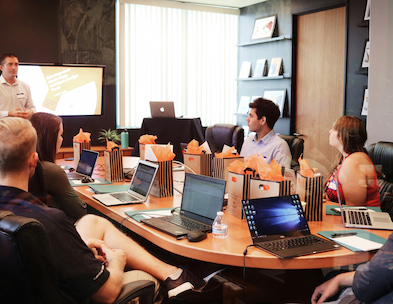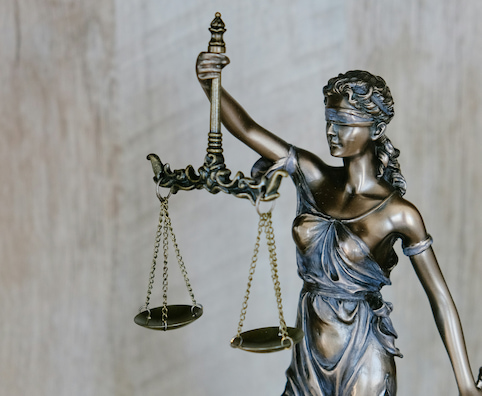Active shooter training
We’ve all seen at least one news report about a school shooting, armed rampage or marauding firearms attack – more likely to be recent than not. Armed gunmen are a real and serious threat, and active shooter incidents have been on the rise over the last few decades, most notably in the USA. Bespoke training has become commonplace, and preparedness is at an all-time high. In this article, we investigate how active shooter training courses can make the difference between lives lost and lives saved.
“Maybe heroism can’t be taught, but preparedness certainly can be.”
Carson Abt, Parkland School Shooting Survivor
On top of the growing threat of active shooter incidents, organisations must be ready for their own preparedness and planning to hold up to intense public scrutiny if an incident does occur. Active shooter training is increasingly available to planners & organisational leaders and is becoming ever more popular outside the US, as a model of how to respond to circumstances which most people hope they will never experience.
The emerging trend (and current accepted practice in the USA) is for active shooter preparedness to be considered as part of a larger incident response management system, even in circumstances and situations where it seems unlikely to be needed.
Active shooter incidents – an alarming trend

It’s difficult to know how many incidents involving armed perpetrators are “active shooter incidents”, as much depends on the criteria used to define the incident.
In its reports, the FBI defines an active shooter as “one or more individuals actively engaged in killing or attempting to kill people in a populated area”. Gang- and drug-related shootings and accidental discharges are not included.
According to the Bureau, active shooter incidents rose steadily in frequency between 2000 and 2017, with 4 shooter incidents per year between 2000 & 2007, 16.4 for 2008-2013, then 20 for 2014-2016 and 30 in 2017(1).
The latest FBI report concludes, “The enhanced threat posed by active shooters and the swiftness with which active shooter incidents unfold support the importance of preparation by law enforcement officers and citizens alike.” (2). There is no question that the threat of an active shooter is a modern phenomenon, and not one that looks like going away soon.
Lifesaving case study

On valentine’s day 2018, 19-year-old Nicholas Cruz opened fire at the Marjory Stoneman Douglas High School in Parkland, Florida, killing 17 and injuring a further 17.
Six weeks prior, the school’s staff had attended an active shooter training class.
Writing for the New York Times in the weeks after the event, shooting survivor Carson Abt stated that the training had saved lives, citing examples of teachers diverting pupils away from the shooter and barricading themselves and their students in unlit classrooms.
“My teachers’ training saved lives. Teachers frantically yelled for their students to go back into classrooms, saving some who were unknowingly running toward the shooter.
Mr. Gard, my math teacher two years ago, evacuated his classroom due to the fire alarm that went off just before the shooting started. But he immediately pulled the students back into his classroom closet when the Code Red was declared. He turned off the lights, locked his classroom door and counted his students. Mr. Gard knew what to do and he saved lives as a result.
At the sound of gunshots, one of my teachers last year, Mr. Rospierski, hurried students into locked classrooms, a protocol reinforced in the teacher training sessions. Then he stayed in the hallway to guide eight stranded students away from the shooter, who was in that same hallway.”
Carson Abt
Carson made an impassioned argument for active shooter training, in an attempt to sway Donald Trump on the issue. Trump has expressed opinions against active shooter training, saying instead that he would rather have a “hardened school”.
Carson cited the teachers’ calm during the crisis as an example which influenced students on the day. Order was somehow retained amidst the chaos, probably saving many lives.
“Maybe heroism can’t be taught, but preparedness certainly can be. Every teacher should have training for a school shooting like mine did.”
A teacher interviewed after the event by WSVN News said the situation could have been far worse.
“We thought it was a fire drill, then we got 15, 20 steps out of the classroom and we got told it was a “Code Red”. We just ran back inside.. crouched down on the floor…
This is the type of situation that we just had training about this, not maybe like six weeks ago about how to deal with this situation, and if we hadn’t had that training it could have been a lot worse.
I managed to put 19 kids in the closet with me. … We were in the closet for probably 40 minutes.”
MSDHS teacher (anonymous)
The interview was conducted by phone, live on air as news channels covered the immediate aftermath of the tragic event.
Preparedness: steps to take now

However one chooses to see the issue of gun control, active shooter training and related concepts make sense. The technical details of how we respond to an armed attack don’t make that attack any more or less likely. They simply have an effect on the consequences of the attack – hopefully leading to fewer deaths and injuries per incident.
Arguments rage in America over Second Amendment laws, armed response and public safety. Whatever one’s opinion on the issue, it would be foolish not to acknowledge and plan for the possibility of an active shooter scenario.
GDBA Active Shooter Stats:
Incidents
• 2016 — 2017: 50 incidents. (30 of these incidents occurred in 2017.)
• 2014 — 2015: 40 incidents.
• 2000 to 2013: 160 incidents or an average of 11.4 incidents per year. (4 occurred in the first 7 years, while 16.4 occurred in the last 7 years.)
Casualties
• 2016 — 2017: 221 killed, 722 wounded (Avg.110 killed, 361 wounded)
• 2014 — 2015: 92 killed, 139 wounded. (Avg. 46 killed, 69 wounded)
• 2000 to 2013: 486 killed, 557 wounded (Avg. 35 killed, 40 wounded)
Full report


